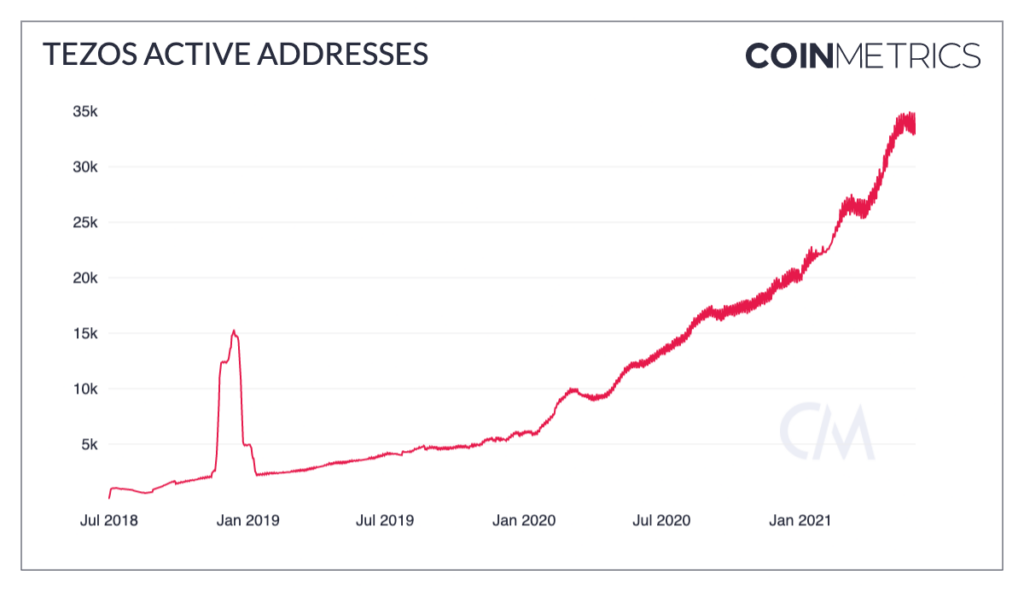Another week filled with red numbers has brought the total cryptocurrency market capitalization back down to $1.50 trillion, before it climbed back up to $1.62 trillion in the last few Sunday hours. While Bitcoin ended week 23 with an 8% gain over last 7 days, quite a few altcoins from the top 50 cryptocurrencies posted 10% or even greater loses. As a natural consequence of that, BTC dominance is on the rise again. However, altcoins are known to be even more volatile and risky, than the industry’s leading cryptocurrency but when the market trend switches, altcoins are usually the ones that rebound higher. Therefore, we are betting on these three promising altcoins this week.

1. Kusama (KSM)
Kusama is a scalable multi-chain experimental blockchain that shares many similarities with Polkadot. Both blockchains are built using Substrate framework, which allows developers to deploy their own specialized parachains on both platforms, but Kusama receives updates prior to Polkadot and therefore acts as a testing environment for Polkadot. KSM token was one of the best-performing cryptocurrencies of 2020 with more than 5.800% gain over the course of the previous year.
Kusama Parachain Slot Auction Set to Kick Off June 15
The Kusama team have recently revealed the details regarding the much-anticipated Kusama parachain auction, which will determine which five parachains will get integrated with the Kusama relay chain. The first Kusama Parachain Slot auction will commence on June 15 at 12:00 GMT. If you are going to participate in the parachain auction, another important date to note is June 17, 09:00 GMT, as only bids posted prior to this point will certainly be considered in the final result. Bids posted past this point will have a linearly reducing chance of being considered. On June 22, 09:00 GMT bidding will cease and at 11:00 GMT on the same day, the winner of the First Kusama Parachain Slot auction will be announced. The winner will be determined based on the highest bid at a randomly selected point during the last five days of auction. This process will than repeat four more times, following the same schedule each week. In total, 5 Kusama parachain slots will be allocated in this auction period. Nevertheless, projects that fail to secure their own Kusama parachain, will have the opportunity to participate in the parachain action again in the near future.

2. Tezos (XTZ)
Tezos is a decentralized smart contract and application network that utilizes a modified version of Delegated Proof of Stake consensus mode. Tezos blockchain features an on-chain governance system allowing holders to take part in the decision-making process. Developers can suggest changes or upgrades for the Tezos protocol, and if their suggestion gets approval from the community and is implemented, developers get rewarded with XTZ tokens. What makes Tezos blockchain stand out among other similar blockchains is its efficient network upgrade process as the protocol allows major upgrades to be implemented without the requirement of a hard fork. This system allows Tezos to adopt new technologies quickly. The native cryptocurrency of the Tezos platform is the XTZ token. The blockchain launched in September 2018, following an initial coin offering (ICO) that raised $232 million in 2017.
Tezos is Successfully Capitalizing on the NFT Hype
The number of active Tezos addresses has been rapidly increasing ever since March 2021, which coincides with the platform’s launch of the Tezos-based Hic et nunc NFT marketplace. Tezos appears to have successfully captured a large chunk of Ethereum’s market share when it comes to non-fungible tokens (NFTs) as it offers relatively low transaction fees, which makes NFT minting and selling a lot more economical compared to Ethereum. This also made NFTs more accessible to the masses and thereby attracted many new artists and collectors, which were previously scared away by the high Ethereum fees. Tezos project recently posted that builders, creators, and users made around 1.5 million smart contract calls on the Tezos blockchain in May. Will the growing network user base and activity translate to price appreciation?


3. Litecoin (LTC)
LTC is a Bitcoin fork created by former Google employee Charlie Lee in 2011. The Litecoin network has a target block time of 2 minutes 30 seconds (1/4 of Bitcoin’s 10 minutes) and a four times larger eventual total supply than Bitcoin. In addition, Litecoin utilizes a different Proof of Work consensus algorithm called Scrypt. The development process and efforts to increase the coin’s adoption are led by a Singapore-based non-profit organisation called the Litecoin Foundation. Even though Charlie Lee sold all his personal LTC holdings in December 2017, he continues to be involved in the project.
Founder Charlie Lee Reveals Litecoin is Getting a Major Privacy Upgrade
Litecoin creator Charli Lee recently appeared in an interview with crypto analyst Scott Melker, in which he elaborated on what the next Litecoin update will focus on. He said that the upcoming update will add more fungibility and privacy to the digital token, as these are important properties of good sound money. While these two characteristics appear uncorrelated at first glance, they are, in fact, much more intertwined than it appears. Lee explained, that while one Litecoin can be traded for another Litecoin, with both having equal value, blockchain transactions inherently provide additional information, for example, one specific coin may be held in a wallet containing 100,000 coins, and another in a wallet containing just a few coins. Lee wants to make each LTC coin indistinguishable from any other by hiding this type of information from the public ledger. He said:
“That’s the kind of information that you want to keep private, even if you have nothing to hide. Financial privacy is important.” He proceeded to reveal that he is working on implementing the MimbleWimble privacy technology into Litecoin. Named after a Harry Potter spell that stops people from spilling secrets, MimbleWimble stops the public ledger from blabbing out three crucial and sometimes sensitive pieces of information about each transaction: the sender’s address, the receiver’s address and the number of coins sent. When implemented, MimbleWimble Extension Blocks (MWEB) will allow Litecoin users to send coins in a more private manner and Lee believes that this “is going to help Litecoin become a better form of money.” Does a better form of money translate to a more valuable (crypto)currency?



